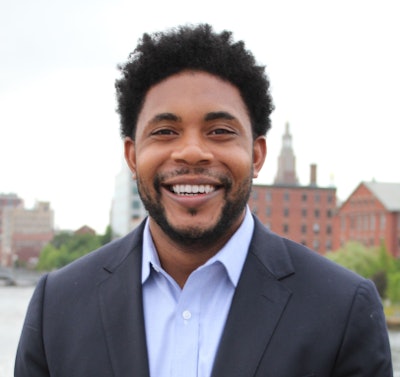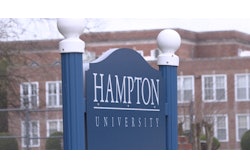Amid ongoing issues with the new Free Application for Federal Student Aid (FAFSA) form this year, the City University of New York (CUNY) is looking to help. Dr. Jonathan Collins
Dr. Jonathan Collins
Part of a new, larger concerted effort from New York state government to boost FAFSA completion rates during a newly proclaimed Financial Aid Awareness Month, the CUNY Financial Aid Support Team (FAST) will partner with New York City Public Schools (NYCPS), the New York State Higher Education Service Corporation (HESC), and public library systems to provide high school and college students personalized assistance with the financial aid form.
"Students – particularly those who come from low-income or underserved communities – rely on financial aid packages when deciding whether to attend college," said CUNY Chancellor Dr. Félix V. Matos Rodríguez. "We don’t want the unprecedented delays and changes in this year’s federal aid application process to deter them from coming to CUNY or any college."
The initiative will train more than 200 college-age peer counselors from CUNY and NYCPS' ongoing College and Career Bridge for All program. They will help high school seniors with the journey of applying to and entering college, including the financial aid process, according to CUNY officials.
More than 20 CUNY students will also be hired to give financial aid support to students and families in New York City’s public schools in various settings – CUNY campuses, New York City public libraries, community centers, and high schools.
FAST will begin April 12 and continue until the end of this September, a CUNY spokesperson said in an email. The initiative is for students seeking financial aid for college this coming fall.
The program will help ensure that high schoolers complete their FAFSA, Tuition Assistance Program (TAP), and NYS DREAM Act applications, in addition to helping current CUNY students with their annual financial aid applications, the CUNY spokesperson wrote.
The Brooklyn-based Carroll and Milton Petrie Foundation is helping fund this endeavor by providing $1 million, which will go toward specialized training, a project director, and six coach supervisors, according to CUNY.
Dr. Jonathan Collins, an assistant professor of education and political science at Columbia University’s Teacher’s College, commended the effort’s personalized approach, adding that it comes amid FAFSA issues but also during a time when college enrollment is low post-pandemic.
"The biggest thing that we see coming from the studies that have looked at successful interventions around increasing FAFSA application submission is this more sort-of personalized touch,” Collins said. “The more a counselor's staff that can be involved in the process of connecting with students and working with them in a more individualized way to walk them through the FAFSA completion process, that's where we've seen the results.”
Collins added that, ideally, he’d want to see more “relationship-based” interventions for students who are less likely to complete the FAFSA – such as interventions from family members, community members, and those from similar backgrounds – which can be more impactful.
There is no one-size-fits-all approach to increasing FAFSA completion among school systems and higher ed institutions, said Dr. Greg Nayor, vice president for enrollment management at La Salle University.
“Every college and university or every college system, like CUNY, has to figure out what's going to work best for their students and their population,” Nayor said. “In CUNY's case, it looks like utilizing the public library system in New York makes a lot of sense. In other places, it might be using the public education system, it might be using direct outreach.
“But what I do think that the program speaks right to the heart of is the challenge of getting people who have been disenfranchised with the process ... to be able to be walked through it. I think there’s a lot of merit in that.”
The FAFSA – which plays an integral role in how colleges and universities determine financial aid packages for its students – was overhauled this past year due to Congress’s FAFSA Simplification Act, simplifying the form, changing aid calculations, and expanding Pell Grant eligibility.
But its rollout has been nothing short of rocky, starting with a launch in late December instead of the traditional launch date, Oct. 1, that faced several technical issues and limited windows of accessibility. Later, the U.S. Department of Education (ED) pushed back the date that it would be sending colleges students’ information, Institutional Student Information Records (ISIRs), from January to the first half of March due, in part, to calculation errors. Additional errors with the information being sent to schools have also been found, according to CNN.
ED announced a series of actions to help ease the burden on schools as they scramble to process student records in time, including providing federal financial aid experts, releasing test versions of the student aid information, and reducing review and verification requirements.
These delays may mean schools have less time to calculate student need-based financial aid packages, and that may subsequently mean less time for prospective students to decide whether to accept college offers.
However, some schools have pushed back their acceptance dates from May 1 to as late as June 30. CUNY has pushed back its own deadline to June 1.
But according to experts, these setbacks are already having negative effects on first-generation students, students of color, and those from low-income backgrounds, possibly resulting in some opting out of college altogether. This could mean smaller classes of incoming students for Fall 2024 and continued racial gaps in educational achievement.















